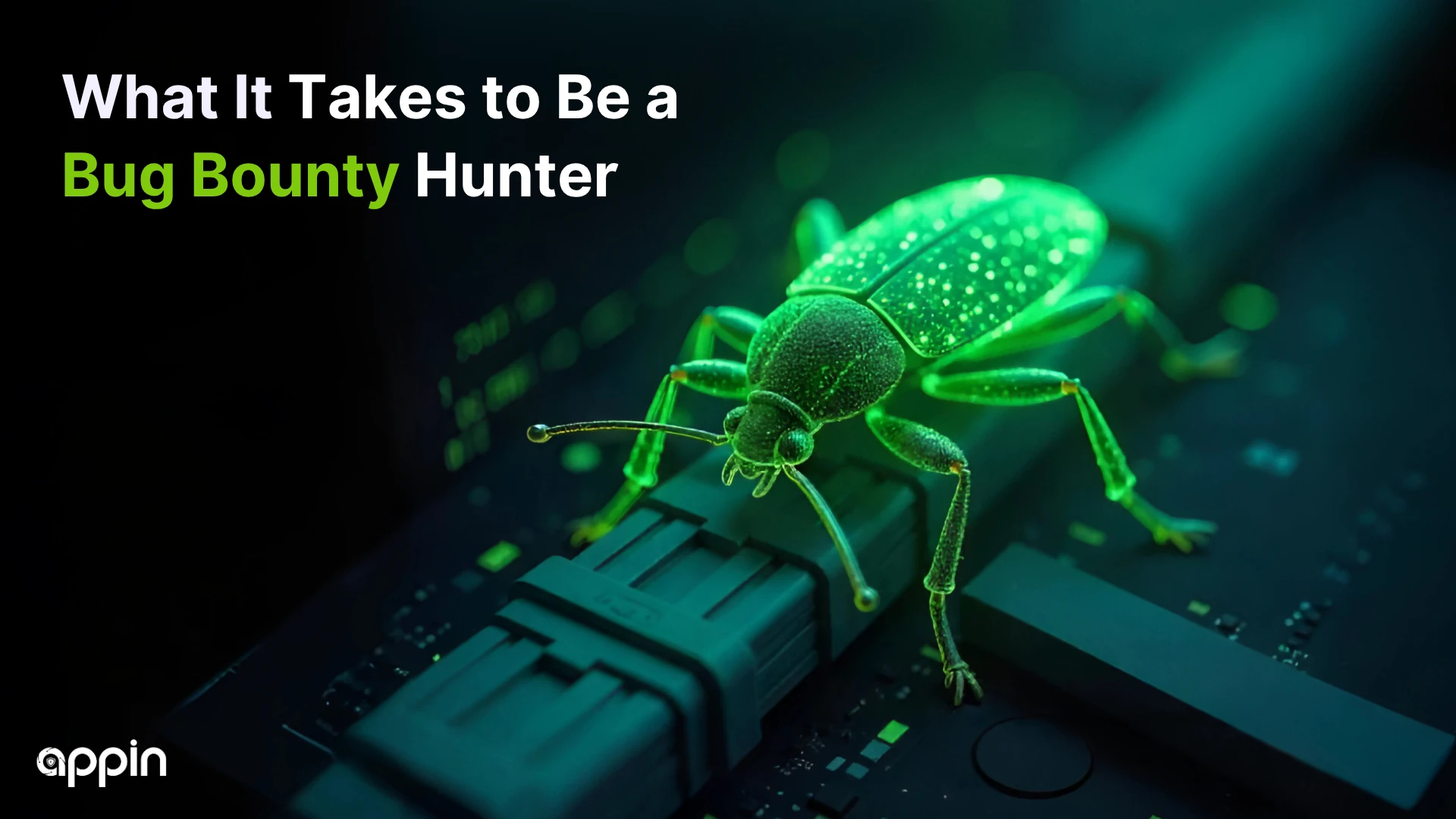Becoming a bug bounty hunter is one of the most exciting paths in cybersecurity right now, especially for beginners who want to learn, earn, and grow on their own terms.
A bug bounty hunter is someone who finds and reports security vulnerabilities in websites, apps, or systems, often getting paid by companies in return. Instead of working for a company full-time, you can choose your own targets from open programs, work at your own pace, and get rewarded for real results.
In 2025, this field is growing fast because:
- More companies are investing in security
- Bug bounty platforms like HackerOne and Bugcrowd are expanding
- Even beginners can start with basic tools and training
The best part? You do not need a degree to start. Just the right mindset, skills, and steps.
In this blog, we’ll walk through the five key stages of becoming a bug bounty hunter, from total beginner to earning real payouts.
Stage 1: Getting Curious About Cybersecurity
Every bug bounty journey begins with curiosity. Before you learn tools or find bugs, you start by wondering how things work and how they can break.
This stage is all about getting interested in the world of cybersecurity. You might find yourself:
- Watching hacking videos on YouTube
- Reading about major data breaches
- Wondering how websites can be hacked
- Trying out free platforms like TryHackMe just for fun
These early signs often mean you have the right mindset for ethical hacking and bug hunting.
You may enjoy solving puzzles, thinking logically, or learning by experimenting. You ask questions like:
- “What happens if I change this URL?”
- “Can I access this without logging in?”
- “What does this error message mean?”
These are good instincts.
Why does this stage matter? Because motivation fuels everything else. The skills can be learned later, but this natural interest will keep you going when things get hard.
If you’re already exploring tutorials, testing tools, or reading blogs like this, you are already in Stage 1.
Stay curious. That mindset is your most important tool in cybersecurity.
Stage 2: Building Core Hacking Skills
Once you get curious, the next step is building real skills. This is where you move from watching to doing.
To start becoming a bug bounty hunter, you need to understand how websites and applications work, and how they can be broken.
Focus on these core areas:
- Web applications (login systems, forms, user input)
- OWASP Top 10 (a list of the most common web vulnerabilities)
- Tools like Burp Suite, Nmap, and OWASP ZAP
Learning by doing is key. You can start with:
- Free labs on TryHackMe or Hack The Box
- Capture The Flag (CTF) challenges
- YouTube tutorials to understand concepts
- Security blogs and writeups from real hunters
But if you want structured guidance, a strong foundation, and hands-on labs, a program like our Cyber Security Certification Course is a smart step. It saves time and helps you avoid beginner mistakes.
This stage is about skill-building. You do not need to know everything. Focus on one vulnerability at a time. Practice. Repeat.
With time, you will be ready to test real targets and join the next stage of your bug bounty journey.
Stage 3: Practicing on Safe Platforms
Before testing real websites, you need a safe place to practice. This is where platforms like TryHackMe, Hack The Box, and PortSwigger Labs come in.
They give you real challenges in a legal environment. You can break things without worrying about consequences. More importantly, you build confidence and hands-on experience.
Start with:
- TryHackMe – beginner-friendly with guided rooms
- Hack The Box – advanced machines to test your skills
- PortSwigger Labs – perfect for learning web vulnerabilities like SQL injection, XSS, and CSRF
These platforms let you go at your own pace. You will learn how to scan for bugs, find weak spots, and exploit them safely.
This is also a good time to explore a bug bounty course if you want structured labs and expert support. It helps you understand not just what to do, but why it works.
Practicing in a legal, controlled environment makes all the difference. You learn faster, make fewer mistakes, and prepare for the real bug bounty world.
Do not rush this stage. The better you train here, the more confident you will be when it is time to test live programs.
Stage 4: Joining Real Bug Bounty Platforms
After practice, the next big step in becoming a bug bounty hunter is joining a real platform. This is where you test live systems, report bugs, and start earning rewards.
Top platforms to explore:
- HackerOne – beginner-friendly, large community
- Bugcrowd – wide range of private and public programs
- Synack – more selective, but higher payouts and structured access
Start with public programs that match your skill level. Read the program rules carefully. Focus on web apps you understand well, and always follow the scope.
Here’s how to pick your first program:
- Choose a company with a clear scope and good documentation
- Start small – test one feature or flow at a time
- Read other hackers’ writeups to learn patterns
Avoid these beginner mistakes:
- Scanning too broadly without a plan
- Ignoring the program’s rules and scope
- Reporting low-quality or duplicate bugs
To stay consistent and improve faster, a structured path like our Bug Bounty Diploma can help. It prepares you with real-world methods and report writing tips.
This stage marks your entry into the real world of bug bounty hunting. Stay patient, keep learning, and results will follow.
Stage 5: Earning Bounties and Growing
This is the most exciting stage: your first payouts. Once you’ve reported valid bugs on platforms like HackerOne or Bugcrowd, you start earning rewards. Even as a beginner, it’s possible to make decent money with the right focus.
Here’s what you can expect early on:
- Small bounties ranging from ₹2,000 to ₹10,000 for low to medium-risk bugs
- Recognition in public programs (hall of fame, swag, or points)
- Confidence to take on bigger programs
Top bug bounty hunters take things a step further. They:
- Specialize in certain types of bugs (like IDOR or XSS)
- Keep detailed notes and build private tools
- Study other hackers’ writeups to learn patterns and techniques
- Focus on report quality and clear communication
To grow your income, you need to build a solid track record. That means:
- Staying consistent with your testing
- Improving one skill at a time
- Writing strong, detailed reports
Reputation matters. As your name shows up in more reports and leaderboards, you will get invited to private programs with higher payouts.
Success in bug bounty takes time, practice, and patience. But once you find your flow, it can become a steady source of learning, income, and personal growth.
Conclusion
Becoming a bug bounty hunter is not something that happens overnight. It is a steady process built on curiosity, learning, and real-world practice.
If you’ve reached this point, you likely see where you are in the journey and what your next step could be. Whether you’re still exploring cybersecurity or ready to test live programs, having the right guidance makes a big difference.
- If you’re building fundamentals, the CEH Course can help you get started with structured learning
- If you’re preparing for live platforms, the Bug Bounty Diploma is a natural step forward
Not sure which one fits your current level? You can Inquire Now and we’ll help you figure it out.





